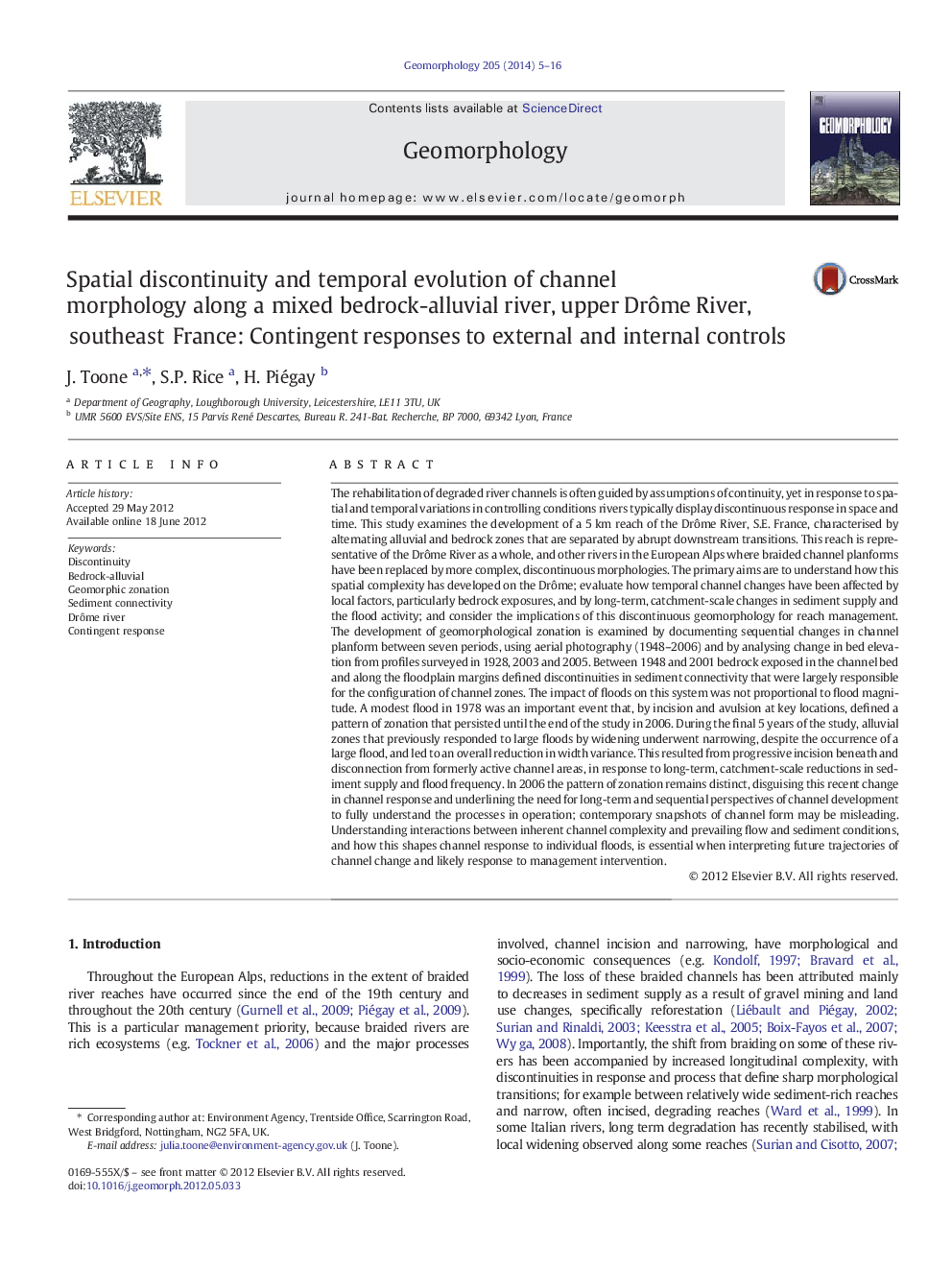| کد مقاله | کد نشریه | سال انتشار | مقاله انگلیسی | نسخه تمام متن |
|---|---|---|---|---|
| 4684724 | 1635444 | 2014 | 12 صفحه PDF | دانلود رایگان |

The rehabilitation of degraded river channels is often guided by assumptions of continuity, yet in response to spatial and temporal variations in controlling conditions rivers typically display discontinuous response in space and time. This study examines the development of a 5 km reach of the Drôme River, S.E. France, characterised by alternating alluvial and bedrock zones that are separated by abrupt downstream transitions. This reach is representative of the Drôme River as a whole, and other rivers in the European Alps where braided channel planforms have been replaced by more complex, discontinuous morphologies. The primary aims are to understand how this spatial complexity has developed on the Drôme; evaluate how temporal channel changes have been affected by local factors, particularly bedrock exposures, and by long-term, catchment-scale changes in sediment supply and the flood activity; and consider the implications of this discontinuous geomorphology for reach management. The development of geomorphological zonation is examined by documenting sequential changes in channel planform between seven periods, using aerial photography (1948–2006) and by analysing change in bed elevation from profiles surveyed in 1928, 2003 and 2005. Between 1948 and 2001 bedrock exposed in the channel bed and along the floodplain margins defined discontinuities in sediment connectivity that were largely responsible for the configuration of channel zones. The impact of floods on this system was not proportional to flood magnitude. A modest flood in 1978 was an important event that, by incision and avulsion at key locations, defined a pattern of zonation that persisted until the end of the study in 2006. During the final 5 years of the study, alluvial zones that previously responded to large floods by widening underwent narrowing, despite the occurrence of a large flood, and led to an overall reduction in width variance. This resulted from progressive incision beneath and disconnection from formerly active channel areas, in response to long-term, catchment-scale reductions in sediment supply and flood frequency. In 2006 the pattern of zonation remains distinct, disguising this recent change in channel response and underlining the need for long-term and sequential perspectives of channel development to fully understand the processes in operation; contemporary snapshots of channel form may be misleading. Understanding interactions between inherent channel complexity and prevailing flow and sediment conditions, and how this shapes channel response to individual floods, is essential when interpreting future trajectories of channel change and likely response to management intervention.
► Morphological changes in a bedrock-alluvial river are examined over a 58 year period.
► Zonation is shaped by sequential, contingent impacts of large floods.
► Bedrock exposures control short and long term changes in channel morphology.
► The persisting impact of a single flood sustains connectivity and channel complexity.
► Multi-scale, evolutionary perspectives are necessary to predict future channel change.
Journal: Geomorphology - Volume 205, 15 January 2014, Pages 5–16